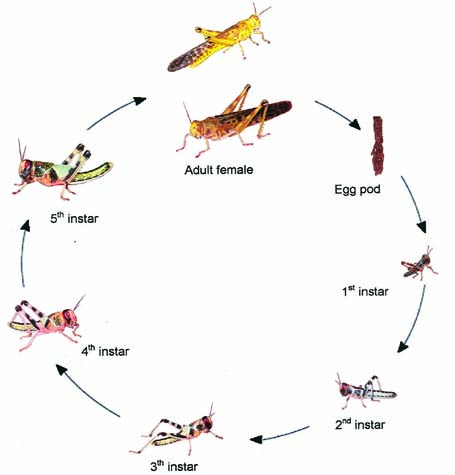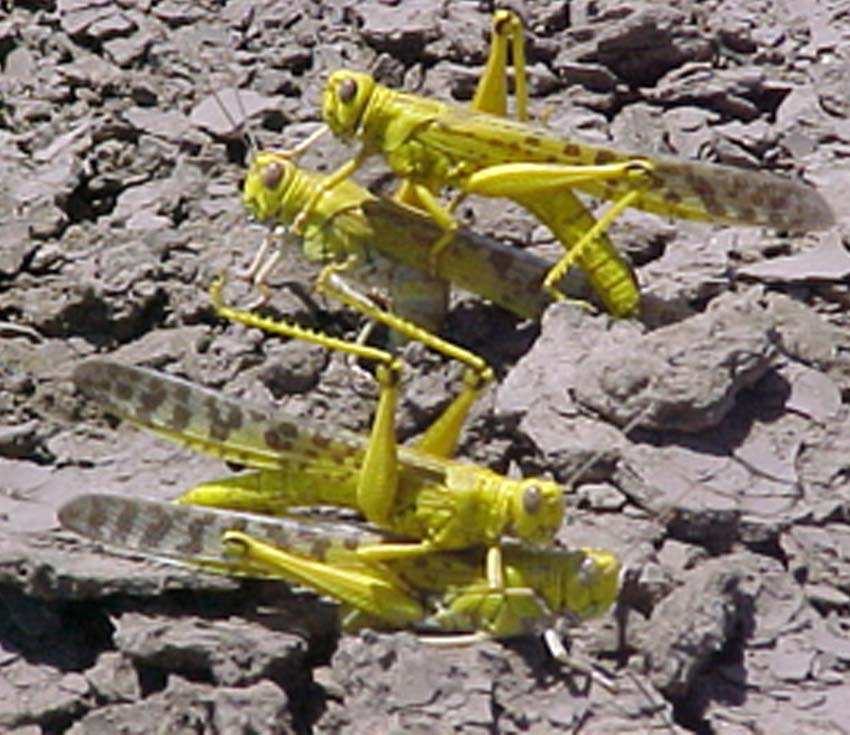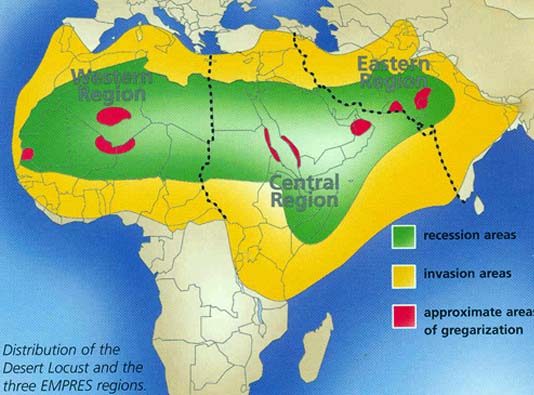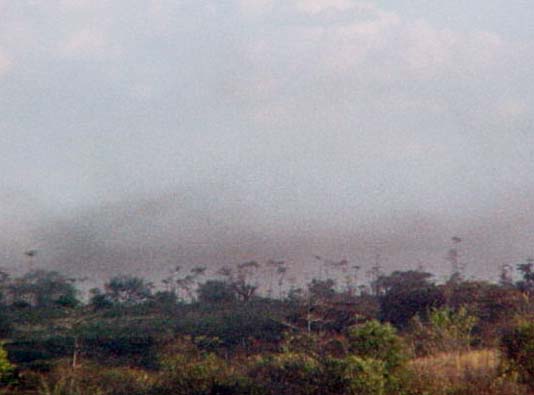The Desert Locust
The Desert Locust (Schistocerca Gregaria Forskål) is a species of short–horned grasshopper that belongs to the family Acrididae, order Orthoptera. Locusts differ from grasshoppers in their ability to change from a solitary living form into gregarious, highly mobile, adult swarms and hopper bands as their numbers and densities increase. Periods of low and intermediate numbers and densities (recessions, outbreaks and upsurges) alternate with very high numbers and densities (plagues).
The Desert Locust poses little or no threat to crops and grazing in Africa, the Near East and southwest Asia when its numbers and densities are low but the risk increases during the one to two year continuum of favourable weather and habitats that support population increases during upsurges and plagues. When that happens, the Desert Locust becomes one of the most internationally known and important insect pests.
Desert Locusts live from 3-6 or even 10 months and apart from accidental death, the life span depends on how long they take to become sexually mature. The quicker they mature the shorter the total length of life. They have 2-5 generations a year depending on the duration of the rainy seasons. Ideally, a female lays eggs into moist sandy soil some 5 to 15 cm deep covered with a dry surface layer, which limits water loss.
Desert Locusts damage a wide variety of wild and cultivated crops and consume about their own weight of fresh vegetation each day. The amount eaten varies from about 20 mg for hatchlings to 2-3 g/day for adults, but it is the vast numbers concentrated into a small area which cause severe damage locally. Half a million locusts each weighing 2g will together eat about one tonne of vegetation each day. This amount is said to be enough to feed about 2,500 people .
DLCO-EA has collaborated with national and international institutions to investigate the introduction of Insect Growth Regulators (IGRs) and bio-pesticides into locust control. The IGRs teflubenzuron, triflumuron and diflubenzuron, which inhibit chitin synthesis during moulting, have undergone successful field trials for controlling of hopper bands.
Controlling Desert Locust bands and swarms to prevent plagues not only benefits countries where outbreaks or upsurges occur but also those beyond the recession area which are invaded solely during plagues.




